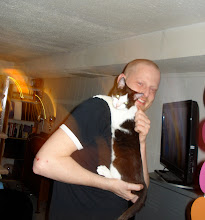Xerox Research Centre Europe (XRCE) is based in Grenoble, France. It is the sole European part of the global Xerox Innovation Group (XIG) led by Hervé Gallaire, Chief Technology Officer, Xerox Corporation and created in 2001 to conduct exploratory research and invent next-generation technologies. XIG, and XRCE in turn, employs scientists who invent new technology, experts who obtain and protect the patents and intellectual property, and managers who deliver the technology to the three Xerox business groups: Xerox Global Services (XGS); Production Systems Group (PSG); and Xerox Office Group (XOG).
XRCE focuses on services that help people access and share documents and knowledge, regardless of device, format, platform or language, from the desktop or remotely. It coordinates research, engineering and the TeXnology Showroom, a customer showcase for Xerox research and a technology exchange forum. XRCE’s development team validates research technologies, ensuring that they meet scalability, reliability and other engineering criteria. XRCE technologists work directly with early adopters, feeding their input back to the researchers as they continue development.
Ultimately, XRCE technology will often be either transferred to Xerox Global Services to be used in Xerox’s consultancy offerings, to the Xerox Office Group for value added services, or licensed to a third party for commercialisation as an end-user application or system. XRCE is also in charge of developing connections within the wider European scientific community through collaborative projects and partnerships.
XRCE employs 100 personnel, led by Monica Beltrametti, vice president and centre director, XRCE. She is responsible for strengthening Xerox’s research programs in Europe and developing connections within the wider European scientific community while creating new business opportunities for Xerox in solutions and services. She also oversees the European technology showroom that each year hosts hundreds of customer visits.
Graham Button is director of the laboratory at XRCE, responsible for the coordination and implementation of research programmes from conception, to know-how and technology transfer. His studies of work practices have brought value to Xerox in a number of diverse fields, and he was a leader in the original XRCE “Office of the Future” project, some of whose concepts and technologies have been adopted by Xerox business groups.
Graham and Monica lead the XRCE team in its four R&D competencies: content analysis; document structures; image processing; and work practice. This also includes collaboration on a number of projects with the other Xerox research centres including Palo Alto Research Centre (PARC) in California and the Imaging and Services Technology Centre in Webster, New York.
XRCE was established to explore future spaces, the same reason PARC was created in the 1970s, i.e. to invent the office of the future. By the early 1990s, Europe was rapidly becoming a creative and expanding R&D environment. Xerox therefore decided to open a European research centre in 1993 to contribute actively to the vision of helping people with their document intensive business processes. Document content analysis being recognised as an important requirement, it had an even stronger meaning in Europe with its diversity of languages and business processes.
XRCE is structured into four complementary research areas:
1/4 Content analysis consists of four core linguistic technologies that are used to build different content management software applications: finite state technology (FST); machine learning; parsing; and semantics. Further detail on this department can be found in the XRCE: Media Backgrounder - Content Analysis Research Area document (see contact details below).
2/4 Document structure is aligned to the increased adoption of extensible mark-up language (XML) by the IT and internet industries, and the sheer potential of XML as a language of communication between disparate systems. Further detail on this department can be found in the XRCE: Media Backgrounder – Document Structure Research Area document (see below).
3/4 Image processing specialises in images captured by digital cameras, and continually builds on developments made in capturing images in hostile environments. ‘Hostile’ refers to an environment where poor lighting, shadows, skewed documents, smudges or any other factor that causes the integrity of a document to be compromised may reduce image quality. Further detail on this department can be found in the XRCE: Media Backgrounder – Image Processing Research Area document (see below).
4/4 Work practice concentrates on: improving understanding of the way in which work is organised; and improving understanding of how a particular type of customer is working i.e. a specific vertical industry sector. Both of these areas link closely to the Xerox Global Services business group. Further detail on this department can be found in the XRCE: Media Backgrounder – Work Practice Research Area document (see below).
For more information, please refer to www.xrce.xerox.com or contact...
11 June 2004
Subscribe to:
Posts (Atom)
About Me

- Glyn
- Toronto, Ontario, Canada
- PR, internal communications and branding pro currently freelancing as a consultant, writer, DJ, and whatever else comes my way.


